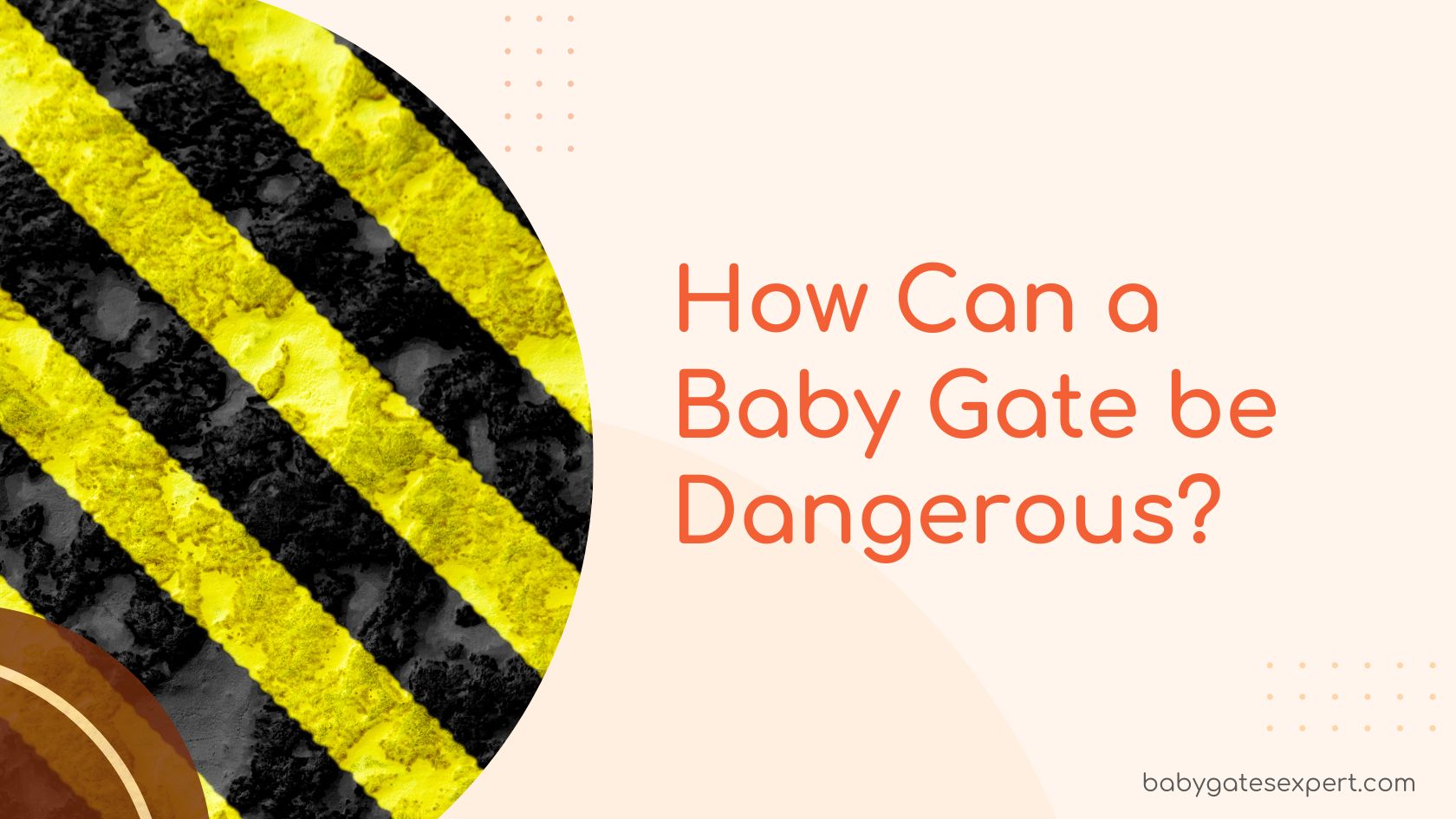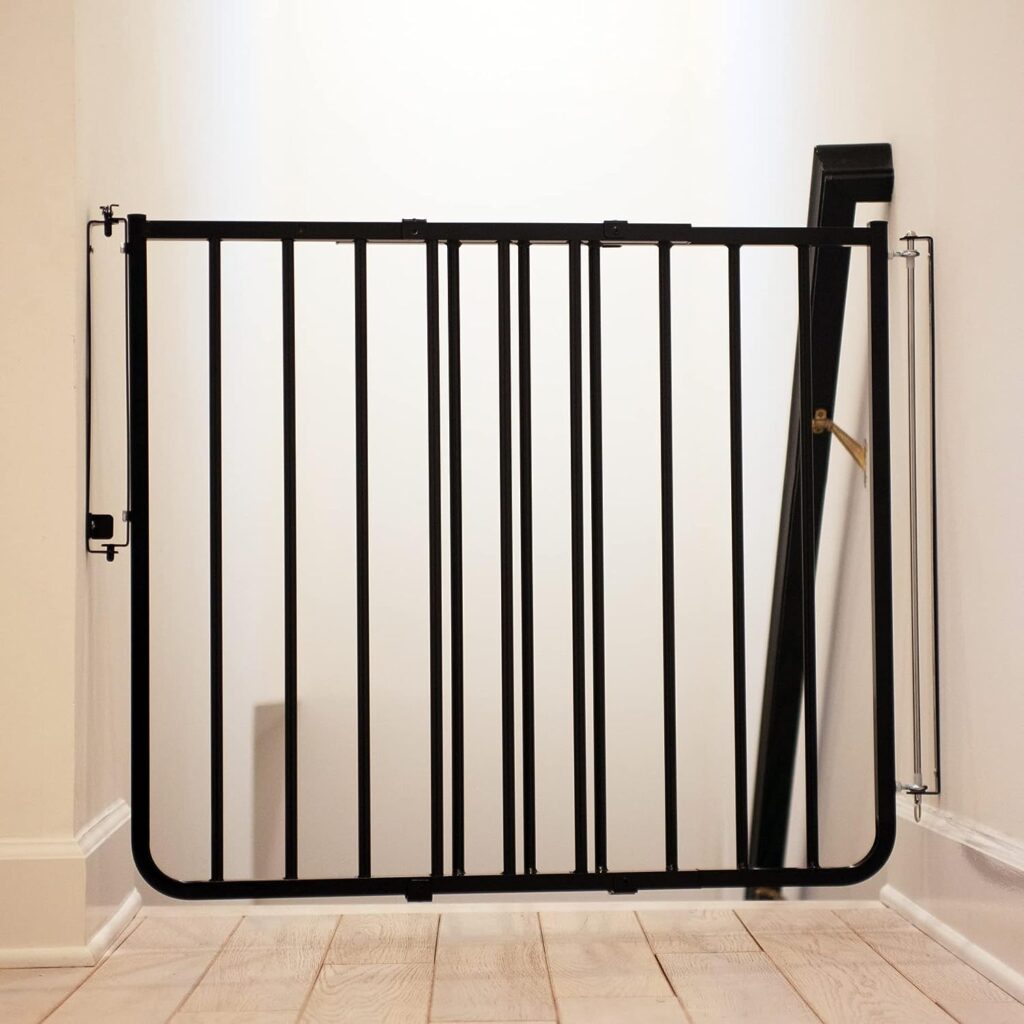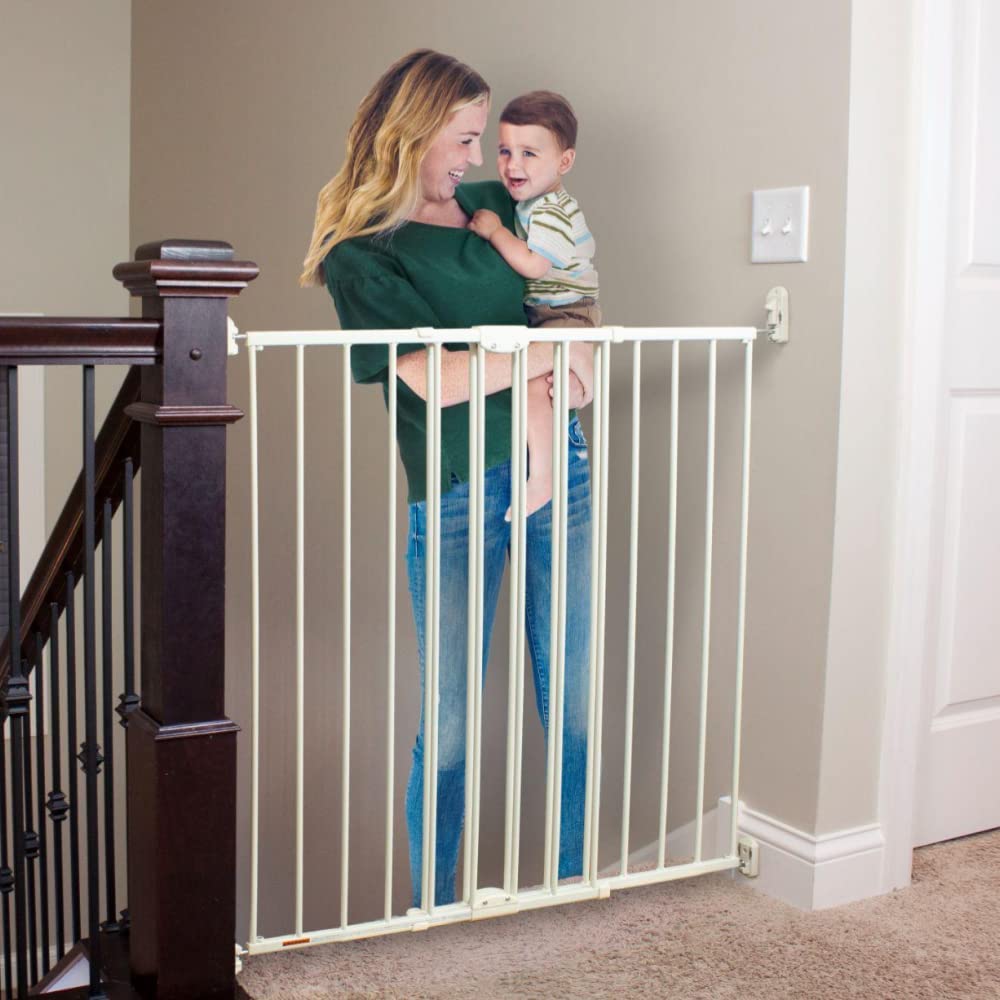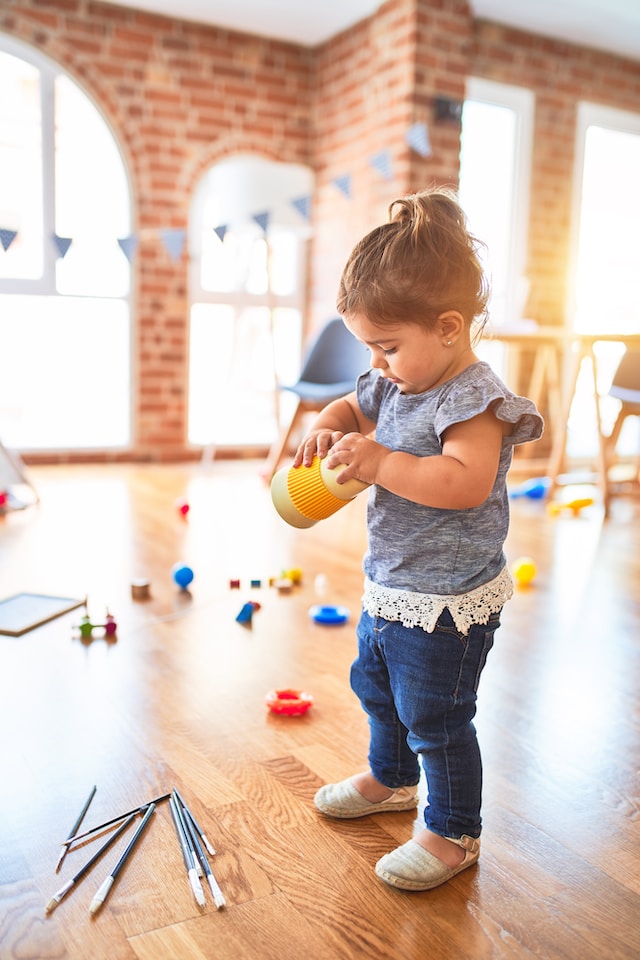When I was a new mom, I can’t tell you how often I wished my baby had come with a safety manual.
What dangers should I concern myself with?
How best could I keep him safe?
What parts of baby proofing really mattered? What’s the deal with baby gates?
Now that I am a seasoned mom and have a few years under my belt, I can tell you that despite everything you do, baby is going to get some bumps and bruises along the way. You can’t protect her from everything and sometimes it is going to break your heart. (Just last night my toddler stumbled and fell with her dolly and chipped her tooth!)
Though none of us are immune from accidents happening to our children, it is always in our best interest to be reminded of the ways that we can improve the safety environment around our kids. When we know better, we do better.
When you realize that the American Academy of Pediatrics states that nearly 1800 children a year are treated at the ER for accidents with baby gates, it is time to start looking at the why…and the how we can do better.
Don’t get me wrong! Hurray for more baby gates getting used! Yeah for parents trying! But it is true, these critical components of childproofing can actually create HURT even while they’re meant to be helpful.
So let’s answer the question: How can a baby gate be dangerous?
1. If it is installed or used incorrectly, it can fail.
This is a biggie! Sometimes it is tricky to figure out the best way to get a baby gate secured tightly, especially if you have angled walls, thick baseboards, various-sized posts or banisters, or other odd scenarios. Some baby gates are designed for unique uses such as these, others are clearly only for installation between two solid parallel walls or door jambs.
Make sure that you are using the correct type of gate, follow all instructions exactly, and double-check for sturdiness. And keep it closed!
2. A pressure-mounted gate that is installed at the top of the stairs can give way.
This is one of the main reasons so many kids end up taking a serious tumble. No matter how much you tighten one of these gates, you run a risk that someone will push too hard or fall into it, causing it to dislodge. This will allow gate and baby to take a ride that no one wants.
Always and ONLY use a permanently-mounted gate at the top of any stairway! (And put a baby gate at the bottom of the stairs, too, if baby has access.)
3. It is installed, but not checked periodically for problems.
Sometimes a gate loosens over time or become dislodged. Sometimes a part fails from normal usage or a defect. Make sure that you inspect your gate regularly for issues that could lead to trouble down the road. Check for loose supports or screws and tighten them securely.It also doesn’t hurt to make sure your gate hasn’t been a part of a recall.
4. It isn’t installed or removed soon enough and trouble ensues.
First, make sure your gate is installed before your baby is six months old or begins to roll about or pull up. An uninstalled gate is not able to its job.
But equally important, take down a baby gate once your toddler begins to try to scale it (usually around age 2). A gate that is attempted to be climbed definitely becomes more dangerous than not having one at all. Not only does a gate in this situation give a false sense of security, but a fall from the top of a gate is not pretty!
Bonus: Also double-check that the baby gate you choose has appropriate-sized gaps between the slats (less than 4 inches), has no sharp places that can poke, scrape, or pinch baby, and doesn’t have cross-pieces than can give your climber “toeholds” that they can use to climb out.
Now please don’t be discouraged from using baby gates! They are fantastic inventions that can clearly make your home much safer. But at the same time, don’t become complacent in their usage and let them create a hazard.
Happy Baby-Gating!









